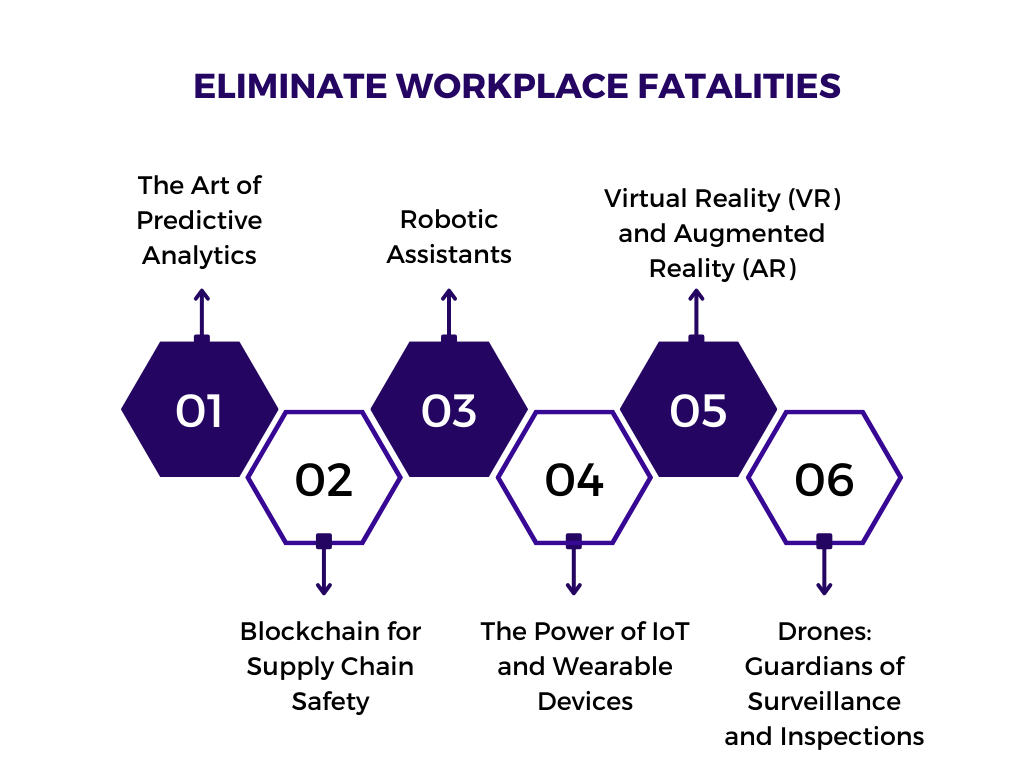In today's landscape, prioritizing workplace safety remains a paramount concern. Despite significant advancements in safety regulations and practices, the unfortunate reality is that workplace fatalities and accidents continue to persist. However, with the integration of cutting-edge technology, a promising path toward reducing and ultimately eradicating these tragedies has emerged.
In this blog post, we'll delve into a range of innovative technologies that are actively contributing to making workplaces safer and more secure.
1. The Art of Predictive Analytics
Machine learning algorithms have proven their worth by analyzing extensive datasets to predict potential safety risks. By analyzing historical data on workplace incidents, these tools pinpoint patterns and trends that may predict accidents. This safety-focused approach empowers organizations to take preventive measures before accidents occur.
2. Robotic Assistants
Increasingly, robots are finding roles in hazardous work environments where human workers cannot safely perform their tasks. With remote control or autonomous operation, these robots minimize the risks associated with human presence, especially in high-temperature, radiation-exposed, or toxic environments.

3. Virtual Reality (VR) and Augmented Reality (AR)
VR and AR technologies have redefined safety training through immersive simulations. With virtual reality, employees can practice safety protocols and emergency responses without being exposed to any real risks. Additionally, AR provides real-time guidance and information to workers on the ground, significantly improving situational awareness.
4. Blockchain for Supply Chain Safety
Blockchain technology has introduced transparency and traceability into supply chains. It acts as a vital aspect in industries where material source and quality directly impact worker safety. By utilizing blockchain technology, you can track the origin and handling of materials. Companies can secure compliance with safety standards and substantially decrease the likelihood of accidents resulting from inadequate materials.
5. The Power of IoT and Wearable Devices
The development of the Internet of Things (IoT) has brought about a significant shift in workplace safety. Nowadays, employees have the opportunity to use smart devices that provide real-time health and safety monitoring. For instance, smart helmets equipped with advanced sensors capable of detecting hazardous conditions, such as elevated levels of toxic gases or potential head injuries. These devices not only alert the employee but also transmit crucial information to a central control room, ensuring instant responses in emergencies.
6. Drones: Guardians of Surveillance and Inspections
Drones have emerged as indispensable tools for inspecting challenging-to-reach areas across various industries, from construction to mining. With high-resolution cameras and specialized sensors, these aerial tools continually monitor workplace conditions and identify potential hazards. In addition to that, drones offer a safer alternative instead of sending human workers into dangerous or inaccessible locations
Final Thoughts
Incorporating cutting-edge technology into the workplace represents a flawless approach to reducing workplace fatalities. These advanced technological solutions empower organizations to oversee and improve safety protocols proactively. As technology advances, our ability to create safer work environments grows. By investing in these technologies and cultivating a culture of safety, organizations can pursue the vision of building a zero-harm environment.